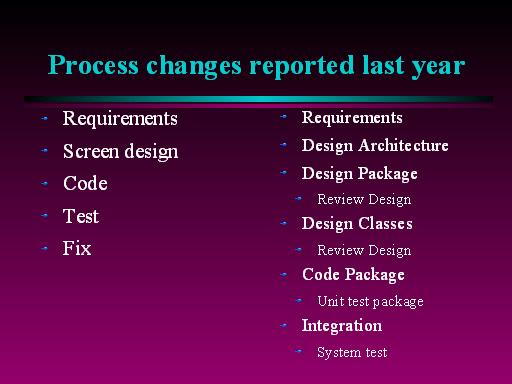





Notes:
The "old" process was simple – gather user requirements, design the screens, code them, test the system and fix any problems. It was not however efficient.
The "new" process is based on the much maligned “waterfall” model. This was chosen because it fit well as an elaboration of the existing business process: both the companies management and the customer demanded an early fixing of the budget, functionality and timescale.
The comparison makes the “new” process look like a lot more work – which is why a lot of organisations prefer the "old" approach. Indeed, if it is done without understanding what is needed to get the job done it can turn into a lot of pointless paperwork.
In practice developers joining the pilot project were enthusiastic about the documentation they were provided and about participating in a review of this documentation before starting work. It gave them a clear understanding of what they were expected to achieve.
Last year's talk went into more detail of the steps in the new process, but in summary: by being careful at each stage we produced results that convinced both the management and developers involved in the project.










